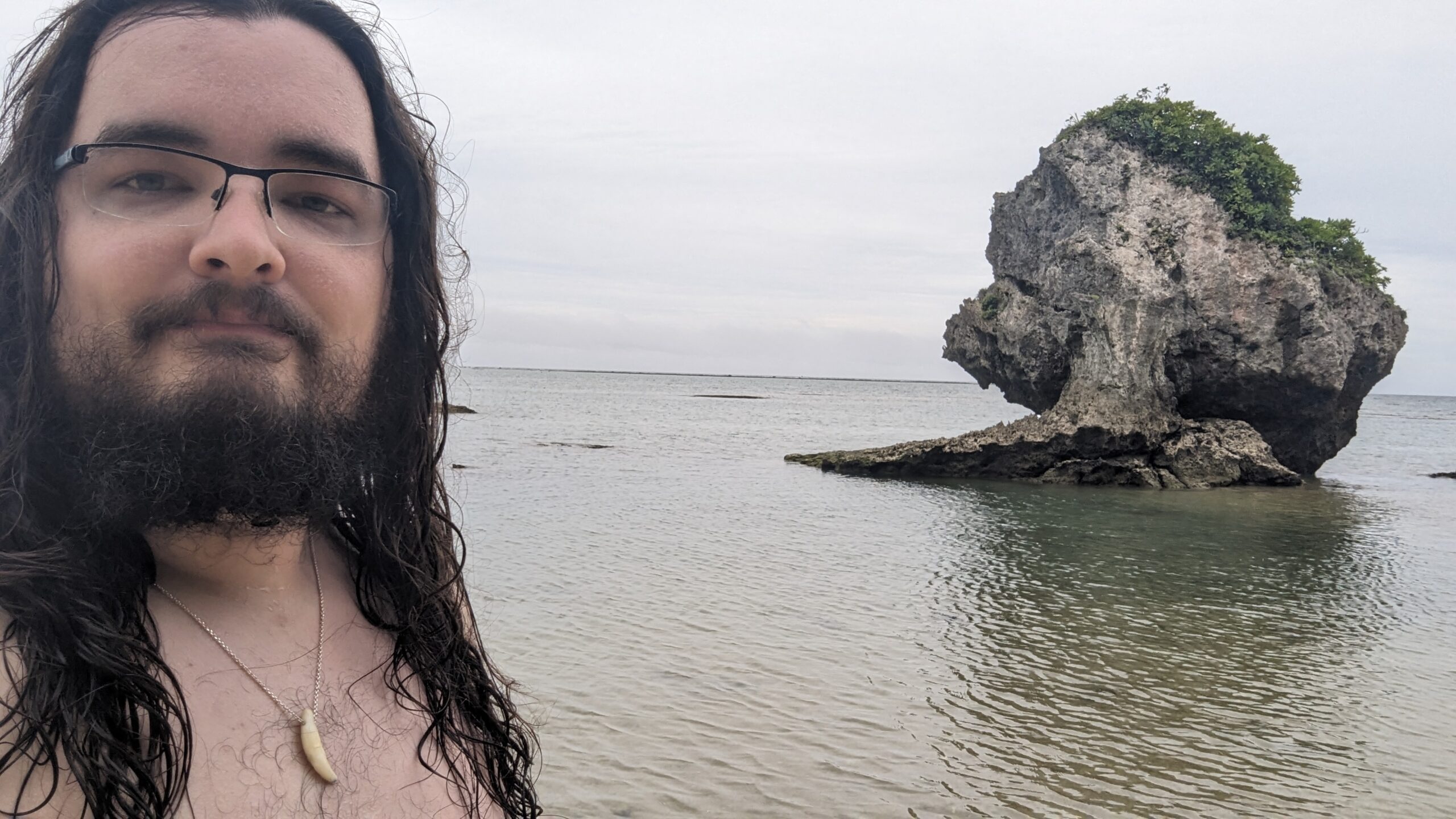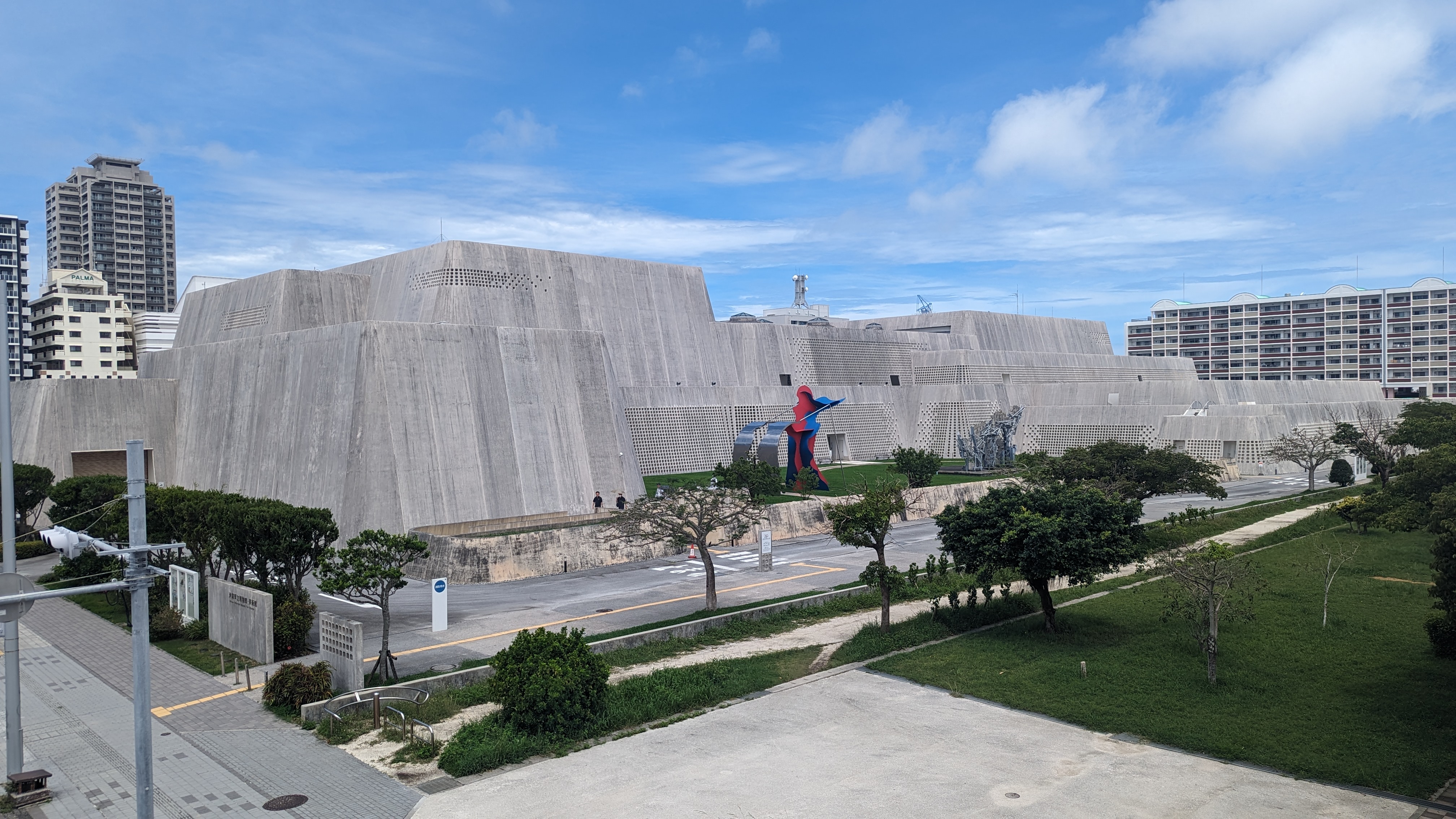
This was inspired by a trip I took with a couple friends from the program to Okinawa last weekend. Sorry, I don’t have any clever lyrical tie ins to the title here. Before leaving for the island, I learned a bit about rock culture in Okinawa through class. See, the short version is that in the occupation during the Vietnam war, US soldiers would demand rock in the bars of occupied Okinawa. They were so on about it that they would give local artists records to listen to and learn how to play rock and even throw bottles at performers if they didn’t play it or were bad at it. Rowdy bunch, soldiers.
Because of the occupation, there was a lot of blending of American and Okinawan culture due to the close and prolonged contact between the different peoples. Note, though, that I said Okinawan culture and not Japanese culture. While I thought the introduction of rock to Okinawa that later spread into mainland Japan, as seen with the JRock genre, was fascinating, Okinawa has always had its own culture.
I spent a good chunk of one of my few days on the island in a local art and history museum. There I got a small insight into traditional Ryukyu culture as well as the history of the island. Admittedly, I didn’t read every last plaque. I read pretty slow, so I mostly read ones that caught my eye. In particular, I learned that Okinawa has kind of always been a cultural crossroads. Yes, they have their own culture that was nearly wiped out, and walking through the folk section of the museum was fascinating to hear the traditional music and see old tools and fishing vessels. What caught my eye, however, were the plaques and exhibits regarding interaction with other Pacific Rim nations.
They had significant contact with the Korean peninsula, Japan and China. Pictures weren’t allowed so I only have memory to go off of, but I recall reading the inscription on a bell gifted to Okinawa by China, celebrating close relations and trade. Okinawa was a place that dealt heavily with trade in eastern Asia. Being so remote an island, they were also really good at building ships, a model of one of which was on display, one that they used to send tributary grains and gifts to China at one point in time. Gifts that the Chinese Emperor would return in kind manifold.
Backtracking a bit to the modern day and American influence, it was quite noticeable walking the streets of Okinawa. The city felt fundamentally different than Kyoto, Osaka and other Japanese towns and cities I’ve seen on the main archipelago. Buildings were a lot more angular and sturdy looking, likely to deal with regular typhoons, but still significantly different than typical Japanese architecture I’ve grown used to. The streets were much wider and cars generally bigger, but of course driving is the best way to get around the island long term so this makes sense. All in all, there were just many subtle things that felt distinctly more American than Japanese when walking around, not all of which I can articulate much past that feeling. A bit more of an even blend than urban mainland cities. I will say that I saw a full on car dealership like you’d see in the US for the first time there, though.
Otherwise it was a pleasant time, trying local foods and visiting beaches. In the one from the picture I posted, I actually did some snorkeling in a shallow reef area in low tide on that beach. I saw several small fish (including a clownfish bailing to a nearby anemone), sea cucumbers and even an octopus tentacle. I never did find its main body, the sneaky little critter. The other picture is the museum I visited, which I thought had a very intriguing look. Very bunker like.
Back in Kyoto, the first half of my stay in Japan is almost over now, so look out for my next update!

